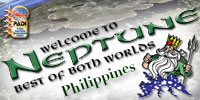Flounders and soles
FLOUNDERS & SOLE'S - PLEURONECTIFORMES
All members of the Pleuronectiformes family including sole's and flounders, have the eyes on the upper part of the body. During the larvae stage they look like other fish, but slowly become more asymmetric during growth. During this metamorphosis, one eye migrates across the head towards the other and the swim bladder disappears. Flounders have the eyes on the left side and sole's have the eyes on the right side. Flatfish, as most people call them, are mainly bottom dwellers and their flattened bodies make it easy to glide over the sea floor when searching for food. They have a long pectoral fin (especially the males) which extends from the center of their backs. Because of their thin profile, they are able to hide from predators and prey. Flatfish bury themselves into sand, with only their one hundred and eighty degrees rotating eyes exposed. All flatfish are masters in camouflage and when they move to a new location, Chromatophores (irregular-shaped skin cells) help them to change patterns and color in seconds to match the surrounding area. Length: 30 cm.Distribution: from E- Africa to S- Japan and Indonesia.Brown blotchy body with a fine white margin on the fin rays. Skin flaps on body surface. Solitary and nocturnal, on sand patches near coastal reefs going from -4 to -50 m.Length: 22 cm.Distribution: Red Sea & E- Africa to S- Japan, Kiribati Is, New Caledonia and G.B.R.Brown with darker brown blotches which form stripes, white spots on the fins.Elongate white dorsal fin rays above the head which they expose when threatened, looks like small fine neon lights. Solitary, on sand and silty bottoms of sheltered bays and estuaries. From -5 to -70 m. Length: 15 cm.Distribution: from the Red Sea and E- Africa to S- Japan, Indonesia and Samoa.Grey-brownish with light brown lines and darker blotches, wide blue band on fins.Black margin on rear dorsal, anal and tail fins. Eyes very close to eachother.Usually buried in the sand with only eyes and nostrils exposed. More active at night. On sand or rubble areas near coastal coral reefs, from -0,5 to -20 m. Length: 40 cm.Distribution: from the Nicobar Is. to Japan and N- Australia.Different shades of brown, spots, rings and lines. Two to four pairs of black spots surrounded with white dots.Solitary, on sand and muddy bottoms of coastal waters.Mostly in deeper water between -50 and -150 m. but occasionally more shallow. Length: 39 cm.Distribution: from Maldives to S- Japan, Samoa. Tonga and Great Barrier Reef.From light- to dark brown with many dark-edged pale spots, some form ocelli.Numerous small yellow spots over the whole body.They have toxic glands along base of dorsal and anal fins, this toxic even protectsthem against frenzy sharks. Lives on sandy bottoms of lagoons, sheltered outer reefs and coastal waters. From -3 to -50 m. Length: 39 cm.Distribution: from E- Africa to S- Japan, Hawaii. Marquesas Is. and Great Barrier Reef. Light brown to grey with dark-edged spots and a large dark peacock feather looking blotch on mid-rear body. Very well camouflagedMales have a elongate pectoral fin. Solitary, on sandy and silty bottoms near a coral reef, from -1 to -110 m. Length: 14 cm.Distribution: from Indonesia to S- Japan.From light to dark brown with dark-edged pale markings, dark blotches along midline of the body. Solitary or form small groups, on sandy areas, coastal sand slopes and estuaries. From -4 to -25 m.





















